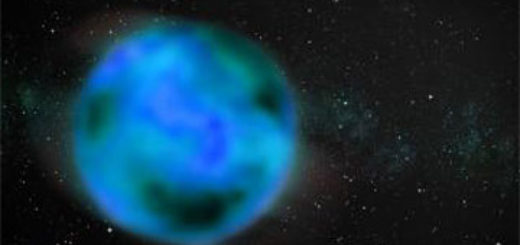Star Located 5,000 Light-Years From Earth Is The Roundest Object In The Universe

Research team from the Max Planck Institute for Solar System Research and the University of Göttingen, has measured the oblateness of an extremely slowly rotating star Kepler 11145123, located 5,000 light years away.
(Oblateness refers to the flatness of the star at its poles.)
It has been revealed that the difference between the equatorial and polar radii of Kepler 11145123 is only 3 kilometers (with a precision of 1 km).
“This makes Kepler 11145123 the roundest natural object ever measured, even more round than the Sun” explains Gizon, in a press release.
Studying the oscillations of stars, researchers used asteroseismology, a technique that helps to reveal the difference between the equatorial and polar radii of the stars.
Stars are not perfect spheres. While they rotate, they become flat due to the centrifugal force and the faster the rotation, the more oblate the star becomes.
This hot and luminous Kepler 11145123 is more than twice the size of the Sun and rotates three times more slowly than the Sun.
It is also significantly more round than the Sun.
NOTE: Our Sun rotates with a period of 27 days and has a radius at the equator that is 10 km larger than at the poles; for the Earth this difference is 21 km.
NASA’s Kepler mission observed the star’s oscillations continuously for more than four years.
“We intend to apply this method to other stars observed by Kepler and the upcoming space missions TESS and PLATO. It will be particularly interesting to see how faster rotation and a stronger magnetic field can change a star’s shape,” Gizon said.
“An important theoretical field in astrophysics has now become observational.”



 Creators of mankind
Creators of mankind Description of “Tall white aliens”
Description of “Tall white aliens” Where they came from?
Where they came from? About hostile civilizations
About hostile civilizations The war for the Earth
The war for the Earth “Tall white aliens” about eternal life
“Tall white aliens” about eternal life Video: “Nordic aliens”
Video: “Nordic aliens” Aliens
Aliens Alien encounters
Alien encounters The aliens base
The aliens base UFO
UFO Technology UFO
Technology UFO Underground civilization
Underground civilization Ancient alien artifacts
Ancient alien artifacts Military and UFO
Military and UFO Mysteries and hypotheses
Mysteries and hypotheses Scientific facts
Scientific facts


















